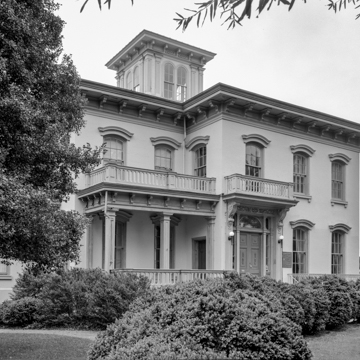You are here
Danville Museum of Fine Arts and History
Because Jefferson Davis spent his last week as president of the Confederacy in this spacious Italian Villa, the house is heralded as the last Capitol of the “Lost Cause.” Davis was the guest of Major William T. Sutherlin, prominent tobacconist, banker, businessman, and Confederate quartermaster of Danville, and his wife, Jane E. Patrick. His asymmetrical stuccoed house has a large, square belvedere with round-arched windows, and a low hipped roof with deeply projecting eaves supported on brackets. The northern rear addition dates to c. 1935 and the southern one to c. 1950 when the building served as a library. The house, now a museum and cultural center, was the center of an early-twenty-first-century storm over whether the Confederate flag should be flown here.
Writing Credits
If SAH Archipedia has been useful to you, please consider supporting it.
SAH Archipedia tells the story of the United States through its buildings, landscapes, and cities. This freely available resource empowers the public with authoritative knowledge that deepens their understanding and appreciation of the built environment. But the Society of Architectural Historians, which created SAH Archipedia with University of Virginia Press, needs your support to maintain the high-caliber research, writing, photography, cartography, editing, design, and programming that make SAH Archipedia a trusted online resource available to all who value the history of place, heritage tourism, and learning.















